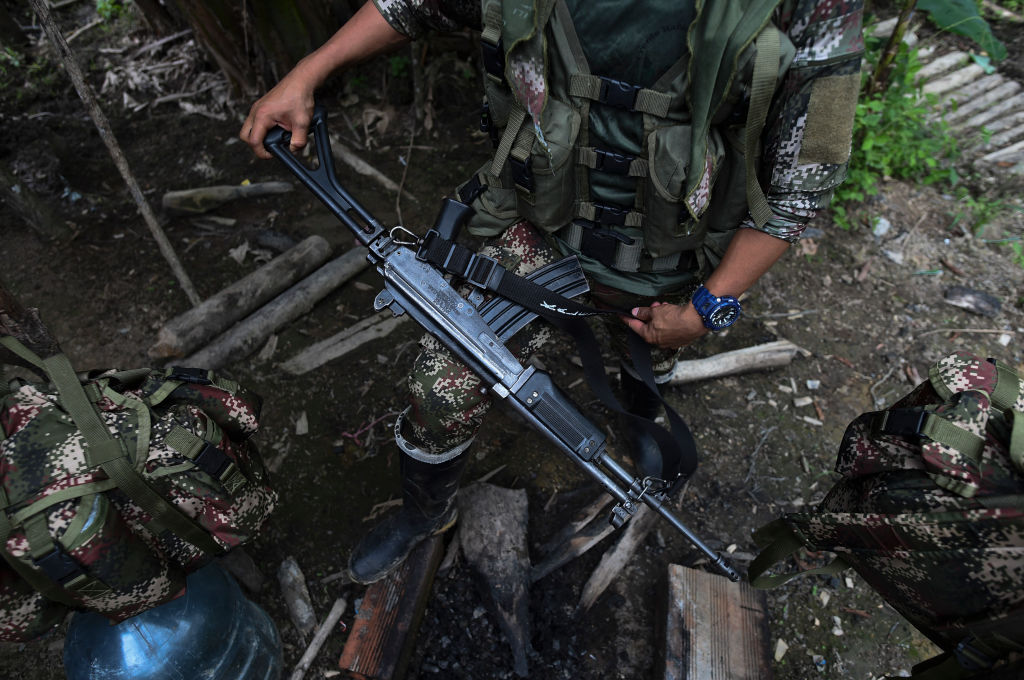





Colombia's violent history and path to peace are being explored in an exhibition titled 'There Is a Future If There Is Truth' at Bogotá's Center for Memory, Peace, and Reconciliation. The exhibition showcases the findings of the Truth Commission, which was established after the 2016 peace agreement. It provides a comprehensive understanding of the 60 years of armed conflict in Colombia and aims to educate and promote reflection. The exhibition features testimonies from guerrilla fighters, ex-military personnel, and victims of human rights violations. It has drawn over 13,000 visitors in the first three months and will remain open until December. Originally planned to be housed permanently in the Museum of Memory of Colombia, the exhibition highlights the importance of understanding the root causes of conflict to prevent future violence [33891598].
The gun and bomb attacks carried out by the EMC rebels in Morales, Cauca department, highlight the ongoing challenges in implementing the Colombian Peace Accord. The attacks demonstrate the presence of rebel groups that have rejected the peace deal and the need for the government to address their concerns. The Kroc Institute's report on the implementation of the peace accord provides valuable insights into the progress and challenges in achieving lasting peace and reconciliation in Colombia [c409c813], [1672d4c0].
Colombia has restarted peace talks with the FARC breakaway group Segunda Marquetalia in Venezuela. The negotiations began in Caracas on Sunday, with Peace Commissioner Otty Patiño and government negotiators meeting with Ivan Marquez, one of the leaders of Segunda Marquetalia. Segunda Marquetalia is the second-largest FARC dissident group, with an estimated 1,200 armed members. Talks with other rebel groups, including the ELS and the largest FARC breakaway group EMC, recently broke down. The Colombian government hopes to reach a peace deal with Segunda Marquetalia within two years before President Petro leaves office. Venezuela has welcomed the peace talks between Colombia and Segunda Marquetalia [ada06562].
Colombia's President Gustavo Petro has restarted peace talks with the FARC breakaway group Segunda Marquetalia in Venezuela. The negotiations began in Caracas on Sunday and include Peace Commissioner Otty Patiño and government negotiators meeting with Ivan Marquez, one of the leaders of Segunda Marquetalia. Segunda Marquetalia is the second-largest FARC dissident group, with an estimated 1,200 armed members. Talks with other rebel groups, including the ELS and the largest FARC breakaway group EMC, recently broke down. The Colombian government aims to reach a peace deal with Segunda Marquetalia within two years before President Petro leaves office. Venezuela has welcomed the peace talks between Colombia and Segunda Marquetalia [ada06562].
The Segunda Marquetalia, a dissident faction of the Revolutionary Armed Forces of Colombia rebels, has agreed to a unilateral ceasefire after peace talks in Caracas. The ceasefire will take effect when a presidential decree is issued to de-escalate offensive operations. The Colombian government announced the agreement, stating that the guerrilla group will hand over hostages and respect the lives of Colombian civilians and officials in the areas where it still has a presence. The government aims to sign and implement a peace agreement with the Segunda Marquetalia before President Gustavo Petro leaves office in just over two years. Colombia is also holding separate talks with the National Liberation Army rebels and the armed group Estado Mayor Central [6508ea6f].
Colombia's government announced it will end a cease-fire with the largest faction of the FARC-EMC, a holdout rebel group that refused to sign a 2016 peace deal. The FARC-EMC has split into two factions, with a cease-fire extended for three months with the smaller faction. The larger faction, led by commander Ivan Mordisco, has been engaged in clashes with Colombia's military since March. The government will now launch military offensives against Mordisco's fighters in other parts of the country. The faction led by Marcos Calarca continues to hold talks with the government and will benefit from a three-month cease-fire that ends on October 15. Colombia's military estimates the holdout group has more than 4,400 fighters operating in southwestern Colombia, the Amazon piedmont, and the Catatumbo region along Colombia's border with Venezuela [8e08fcd3].